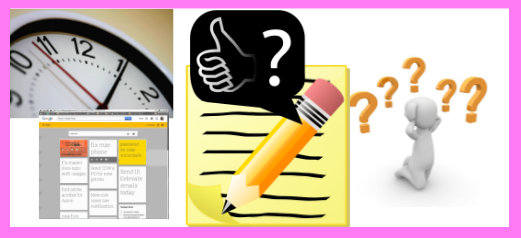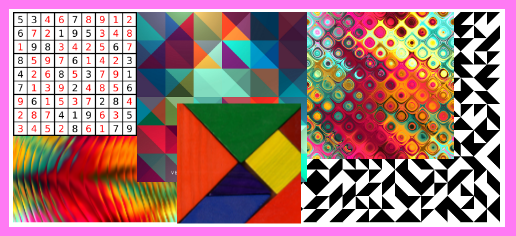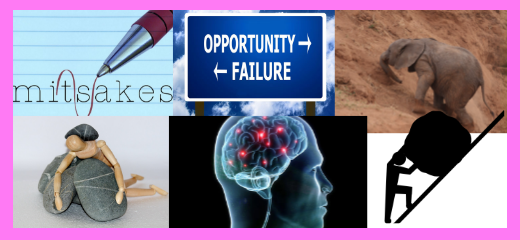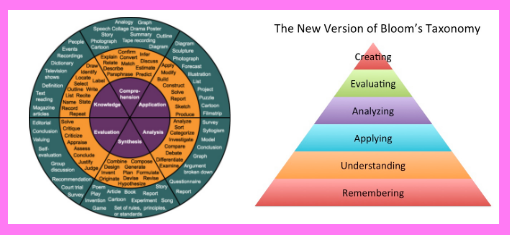
Chapter 7 in Angelo, Thomas A., and K. Patricia Cross. Classroom Assessment Techniques: A Handbook for College Teachers. Print.


- Minute Paper
- Purpose:
- Assess how well students are understanding content
- Help make mid-course adjustments
- Feedback on minute papers helps students distinguish between how experts and beginners distinguish what’s important
- Description:
- Students take 1 minute to answer following questions:
- What was the most important thing you learned in class?
- What important questions remain unanswered?
- Students take 1 minute to answer following questions:
- Suggestions for Use:
- Assess what students learned from a variety of learning activities
- Wrap-up or warm-up activities
- Good for courses that present a great deal of new information
- Well suited for large classes because it is easy to analyze
- Example of Implementation:
- European History
- Two questions were:
- What is the single most significant reason why Italy was the center of the Renaissance?
- What one question puzzles you most about the role of Italy in the Renaissance?
- Analyzed responses and found that some students were confusing cause & effect
- Reshaped outline for future activities using student questions
- Categorized responses by: Major Causes, Minor Causes, Effects, Actors, TBD
- Answered popular questions
- Two questions were:
- Statistics
- Questions
- What were the 5 most important points from that session
- Top 2 questions about the session
- Compiled lists of responses. Categorized and tallied similar responses.
- Responses revealed that students struggles to sort the wheat from the chaff.
- Showed students top 10-12 responses and discussed their relative importance to each other and the course.
- Learned to be more explicit in his instruction – example – started providing key points at start of lectures
- Questions
- European History
- Step-by-Step Procedure:
- Decide what to focus on and choose a time to administer assessment that takes place soon after learning activity related to focus item(s)
- Write 2 questions – use 2 questions in the Description as a template. Try out assessment.
- Set aside 5-10 minutes to do minute paper and debrief time.
- Prepare visual related to 2 questions.
- At appropriate time, hand out paper for 1 minute papers.
- Suggested – let papers be anonymous.
- Let students know their time limits, format of acceptable responses and when the results will be debriefed.
- Analysis Tips:
- Tabulate responses and make related useful comments
- Compare results over time.
- Extension Tips:
- Use Half Minute papers – only one question.
- Make prompt more specific – example – most illustrative example, most compelling charcter, etc.
- Let students compare and discuss their responses in pairs or small groups
- Let students in small groups invent own minute paper questions and let members of the group analyze and present results to the class.
- Pros:
- Immediate teacher / course feedback
- Gather questions while time is fresh (and limited) to address them
- Data can be analyzed and summarized quickly
- Encourage active listening
- Shows how teachers value student feedback
- Feedback on minute paper allow students to compare their responses with the rest of the class
- Cons:
- If overused, may seem gimmicky
- Tricky to come up with questions that can be quickly comprehended and answered
- Caveats:
- Technique is flexible but not universally applicable
- Accept students’ starting points even when they are troubling or irritating. Don’t develop responses to their paper until frustration (if it arises) subsides.
- Set flexible time limits for feedback.
- Promise less feedback than you plan to deliver.
- Purpose:
- Muddiest Point
- Purpose:
- Assesses what students misunderstand
- Identify which topics need more explanations
- Requires some higher order thinking
- Description:
- Students answer question: What was the muddiest point in ______________?
- Suggestions for Use:
- Good for large class sizes because it is easy to analyze
- Use frequently in classes that present a lot of new information (muddy points accumulate quickly)
- Example of Implementation:
- Chemistry:
- Question: What was the muddiest point in enthalpy versus entropy?
- Results revealed students had trouble distinguishing between 2 concepts.
- Showed need for more explicit instruction of each concept in isolation.
- Chemistry:
- Step-by-Step Procedure:
- Determine which learning activity (or part of learning activity) you want feedback on.
- Allow time for students to respond to question at the appropriate time.
- Let students know time limit and how responses will be used.
- Pass out paper for students to write on. Collect papers.
- Present feedback in next class or soon after.
- Analysis Tips:
- Find common muddy points.
- Divide responses into common categories of muddy points and one miscellaneous pile.
- Tally responses in each pile.
- Classify piles as concepts, facts, and skills.
- Extension Tips:
- Assign muddiest point to homework assignments
- Students read each other’s drafts and list muddiest points
- Ask different groups of students to categorize and summarize responses
- Followup with other assessment – Directed Paraphrasing, Memory Matrix, Concepts Maps to see if muddy points remain muddy
- Relate muddy points to upcoming exam questions
- Pros:
- Very little prep – can be spontaneous
- Can be safe outlet for student reluctant to ask question in class
- Can help teachers identify what students find hard to learn – help set different focus for future learning activities
- Get in students’ shoes
- Can help students become more metacognitive
- Cons:
- Can undermine motivate and sense of self efficacy – can combat that this by teaching students the value of struggles and mistakes
- Can be discouraging to know what students misunderstand in a well-prepped learning activities
- Students may struggle to identify and describe their struggles
- Students may raise challenging questions that are hard to answer on the spot
- Caveats:
- Don’t express anger or disappointment when students list muddy points that you thought you explained well
- Don’t spend too much time responding to muddy points – may lose course momentum
- Don’t convey that all muddy points can be resolved quickly – some are landslides that take a lot of time to uncover
- Purpose:

The Minute Paper and Muddiest Points are easy-to-analyze assessments of student (mis) understanding. These can be used to give teachers immediate feedback on the effectiveness of learning activities and insights on how to refine upcoming activities.

Preparation Steps
- Decide opportune times for students to summarize what they know (or don’t know) using Minute Paper or Muddiest Point.
- Decide how you will quickly analyze and summarize the data and how you will use that data summary.
Early Implementation Steps
- Assign Minute Paper or Muddiest Point
- Analyze and summarize the assessments. Decide how to make adjustments that highlight student understandings and resolve student misunderstandings.
- Share results with students with students and how these will impact instruction and student learning.
Advanced Implementation Steps
- Involve students in the writing of Minute Paper & Muddiest Point questions and in the analyze and summarization of results.
- Have students reflect on how their understanding of muddy points is improving (or not) over time.

- Assessment articles
- Understanding articles



















